Sometimes I wonder what life would be like if I hadn’t dived into watches so deeply. Back when I was first getting into the hobby, life was simple; I had an Orient Mako on-wrist, Seiko was all I’d look at, and maybe, just maybe, a Speedmaster would come into the collection some day. Then in early 2016 Seiko unveiled the SRP “reinterpretation” of their 6309-series divers called the Seiko Turtle—and it’s a release that constantly takes me back, leading me to reminisce over those early collecting days.
Jump To:
Common Questions | Specs | Case | Dial | Strap | Movement | Overall
Taking the plunge and purchasing one was a giant leap for me. But then I sold it and bought another… then sold that one and bought another, which is specifically the watch I’ll be talking about today. A JDM variant of the popular SRP777 Seiko Turlte, this Seiko Prospex SBDY015 was the one that finally stuck and after rotating it for a couple years now, I figured it was a good time to finally give it the TBWS review treatment.
Common Questions About The Seiko Turtle
Is the Seiko turtle a good watch?
Yes – it’s probably one of the best affordable dive watches available right now. It has rich history, high quality construction, and an incredibly affordable price.
What Movement Is In The Seiko Turtle?
The Seiko Turtle features the 4R36 automatic movement, which is an in-house caliber.
What Is The Difference Between The Seiko Turtle and Seiko Samurai?
They are two different model designs – specifically, the case shapes between these two models is vastly different. For more reference read more about the Seiko Samurai.
Seiko Turtle Specs
| Case Dimensions: | 44.3mm x 48mm x 14mm |
| Lug Width: | 22mm |
| Crystal: | Seiko Hardlex |
| Movement: | 4R36 |
Much of what I indulge in when collecting involves small details that I can either appreciate privately or share with others that are equally enthusiastic about those details. Sure, it’s a little neckbeard-y, but it’s especially fun when you manage to chase this feeling with relatively cheap watches.
This Seiko Turtle automatic diver is a great example with its JDM “Made in Japan” dial and Kanji day wheel; small touches that most of the time only impress me. But other than that, this is basically a standard reinterpretation of a certain Seiko 6309 diver’s watch with some updates to the case and movement.
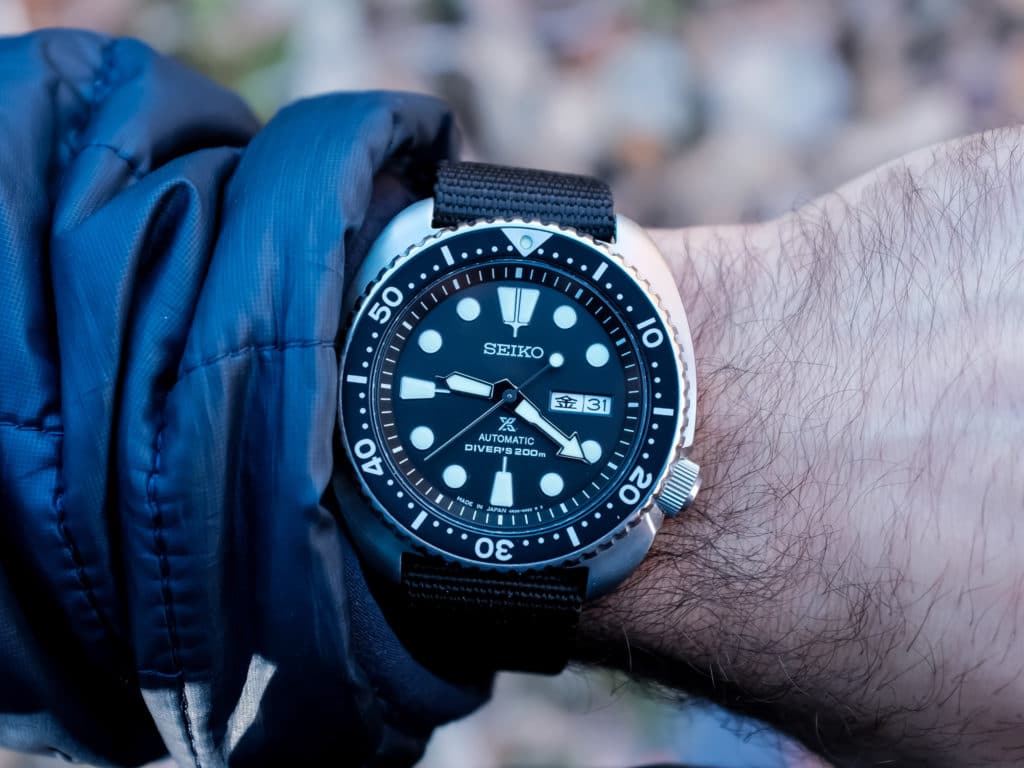
Manufactured from 1976 to 1988, the 6309 divers served as some of Seiko’s most enduring models—seeing wide use among a variety of wearers, some even in the military. And, with a revival of interest in vintage watches sparking in the mid-2010s, Seiko made one of their best moves ever by reissuing these things. Almost everyone was on board and considering the later reinterpretations of other models, the SRP77x lineup still stands as what I’d consider one of their best values.
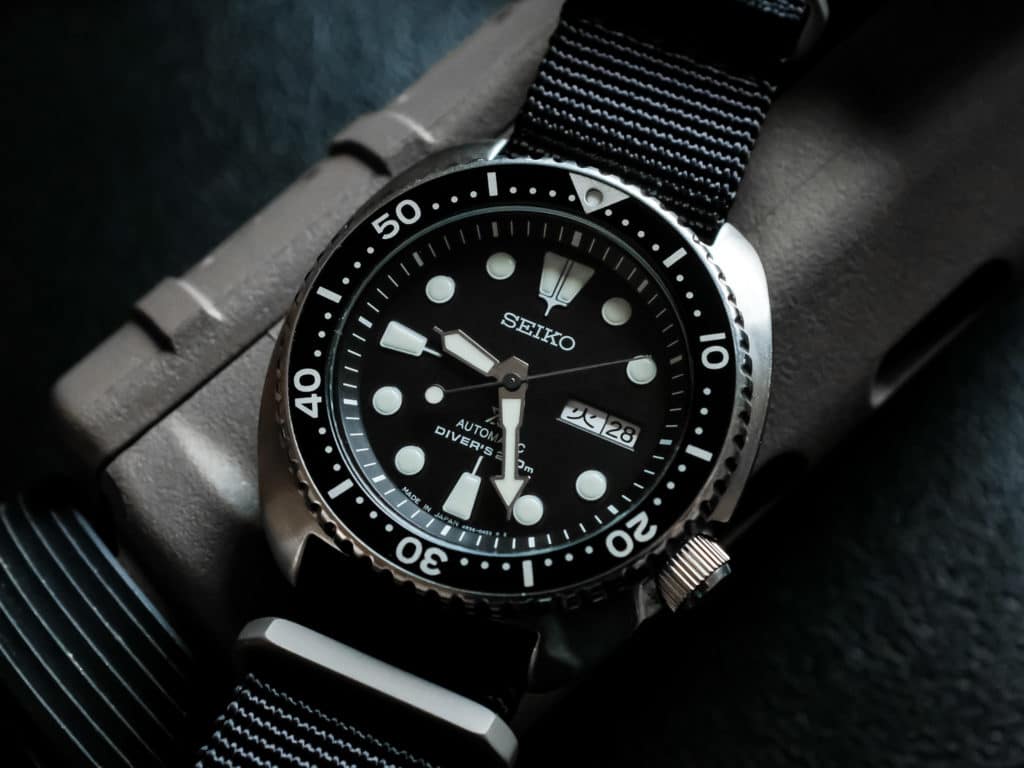
Breathing New Life Into An Iconic Case Shape
For those intimately familiar with the 6309, you’ll see that there’s a slight departure from the original case shape. The lugs on the SBDY015/SRP777 aren’t as stubby, resulting in a longer lug-to-lug length but nothing I find unmanageable with a 6.75-inch wrist.
In fact, while running my research for this article I found a really great Random Rob YouTube video where he discusses many of the 6309 case details and how they might compare to newer Seiko Turtle models. Even considering those differences, I still feel comfortable calling this a “reissue” of sorts. Of course, one of the coolest features is the asymmetrical design that incorporates the screw down crown helping out with 200m of water resistance.
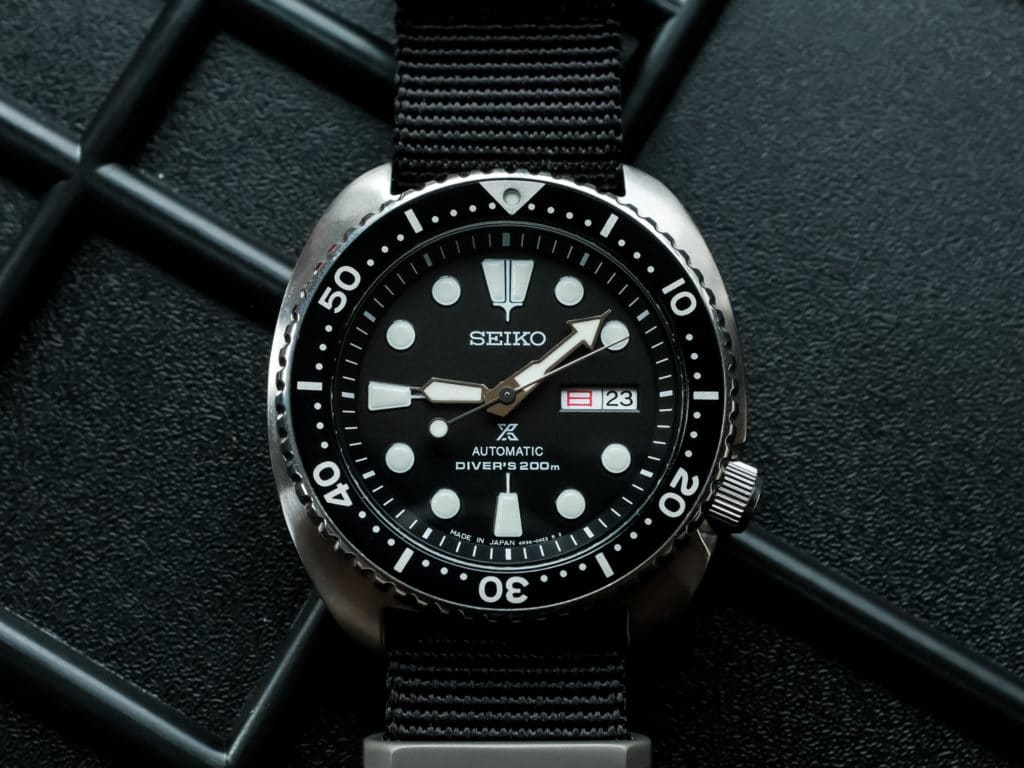
The stainless steel case comes in at 44.3mm in diameter with a thickness of 14mm and a 48mm lug-to-lug distance. We’ve said it many times before but the Seiko magic leads this watch to wear a little smaller than those dimensions would suggest. Still, keeping the shorter 6309 lug style would’ve been really cool. I still prefer this case shape/size to the 6105 “Willard” style cushion divers.
My only complaint here is the embarrassing alignment issue with the dive bezel/insert that many new Seiko models suffer from and this one is no different. Such a shame considering the bezel has such a nice and smooth feel to it. The insert is aluminum and I’m actually not even sure if Seiko has experimented with ceramic bezel inserts yet.
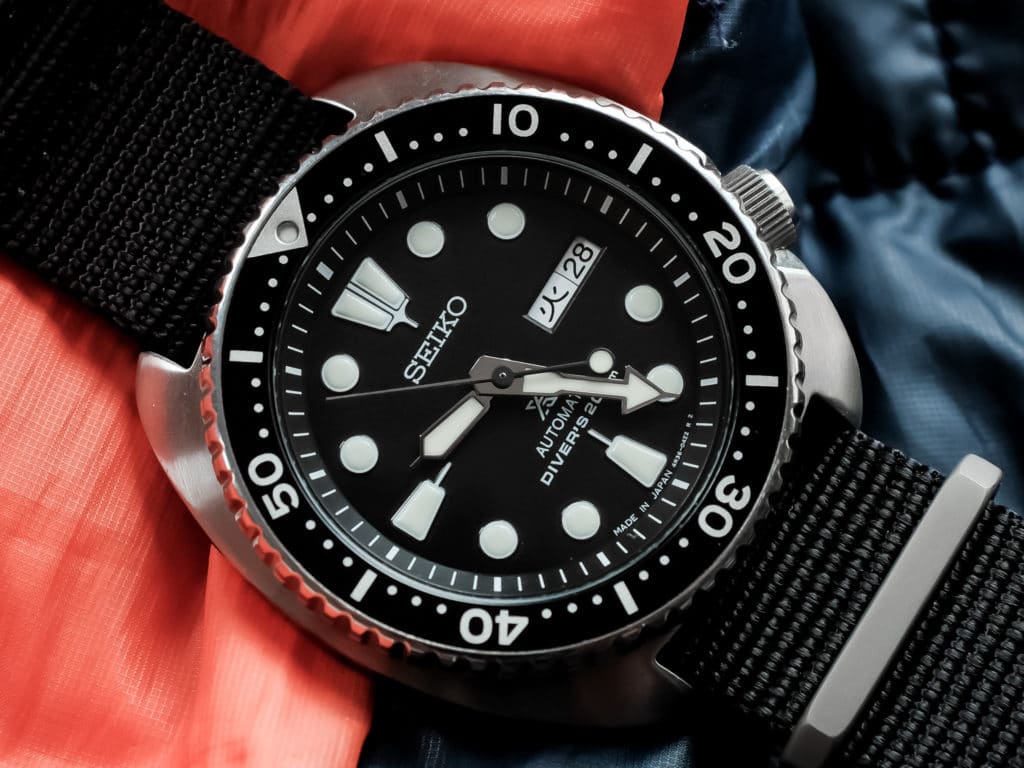
Functional, Perfectly Balanced Black Dial
Perhaps the watch’s most charming feature is its dial. It’s an incredibly simple approach and something I think Seiko has dominated in for decades. The texture/color is matte black with with beefy, lumibrite indexes that are virtually impossible to mix up when reading the time.
And, after so many years of hearing people complain about the Prospex ‘X’ logo, I’ll finally come out and say that it never bothered me. No sapphire crystal here by the way, but I’ve never had any issue with Seiko’s hardlex material.
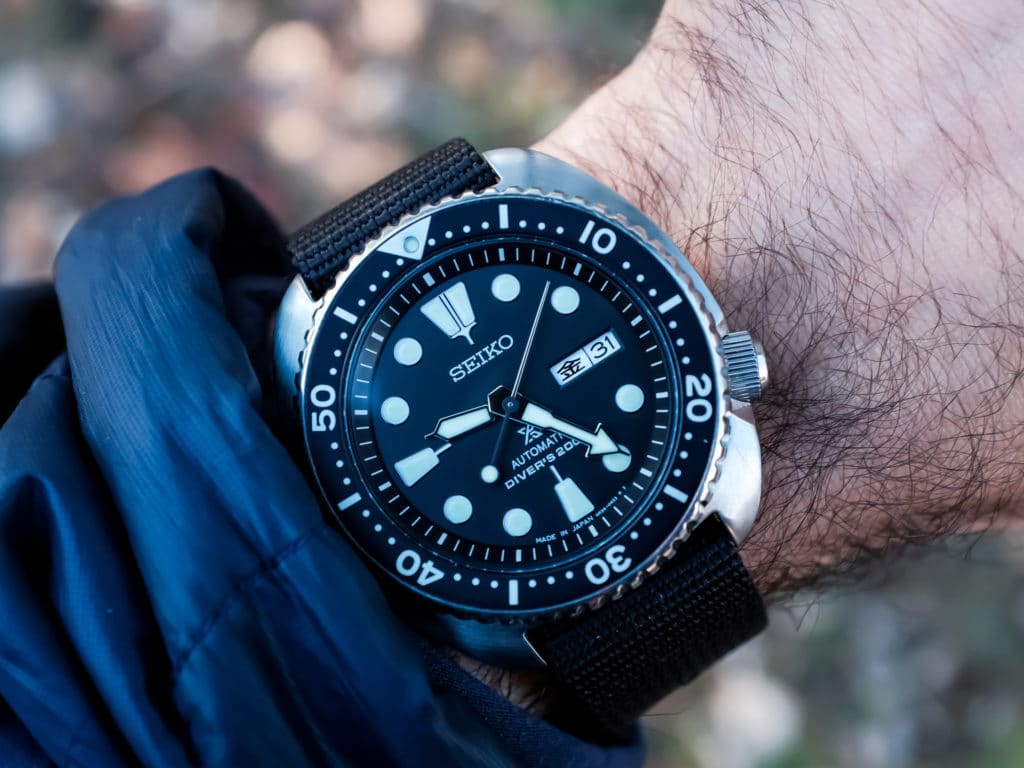
Now, I don’t want anyone to get wrapped up in suspected quality differences between models with JDM dials and those without. That whole K vs. J SKX debate is just as bad. I’ll reiterate that the only printing differences you see here are related to the brand’s intended market for the model, and any domestic requirements outlined by that market.
That said, the “Made in Japan” text under 6 o’clock is something you can get with this model and the SRP777J. But to my knowledge the SBDY015 is the only plain black dial/black bezel version of this watch that comes with the Kanji day wheel. In fact, you might even say that the Kanji is less functional because if I’m neckbeard-ing hard enough, it just means I can’t read what day it is.
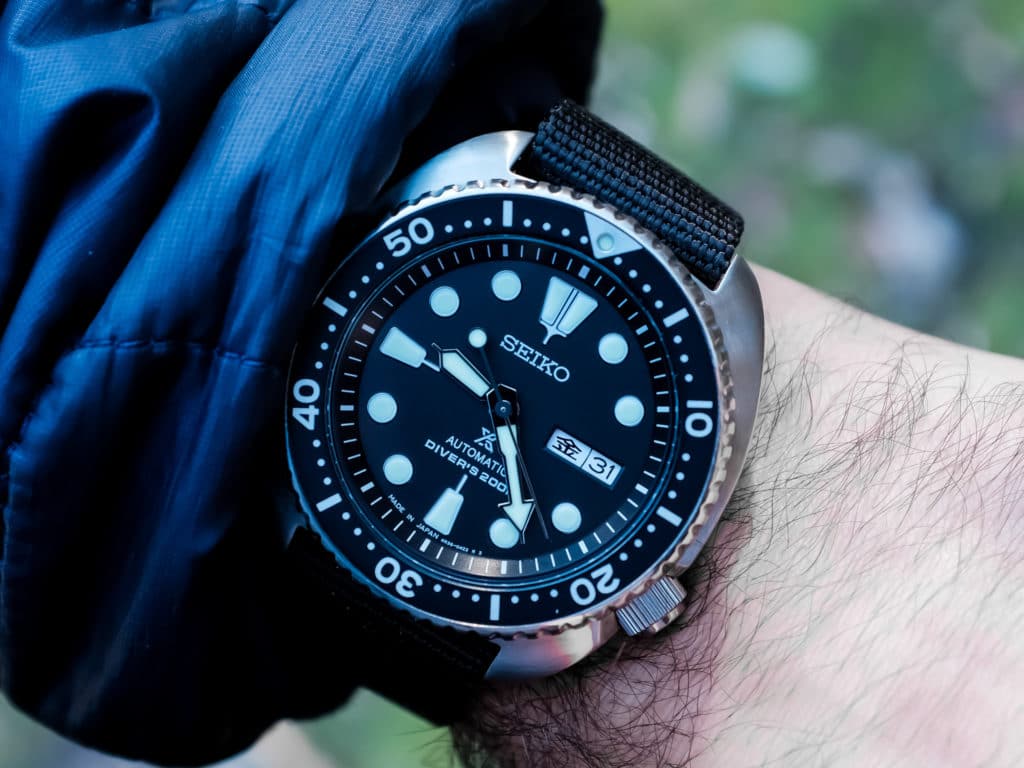
Great Look With Any Strap
Seiko has made some vast improvements with their rubber straps over the last few years and I’m grateful that this Seiko Turtle comes with ones of the newer soft vented straps. But like any Seiko the real fun comes when you start swapping straps. Sure the stock silicone strap is nice—with a softer feel, beefier buckle, and steel keeper. But I’ve always said that a Seiko Turtle on a NATO just feels like “home.”
Most of the time I wear it on a Ute watch strap. Lately, however, I’ve really been digging this Ti-NATO with titanium hardware from Prometheus Design Werx. Like many of the other Seiko sport models, it’s tough to go wrong with most strap combinations. I will say that I have no experience with the Seiko Turtle on the stock stainless steel bracelet though. But that seems like another option some folks enjoy.
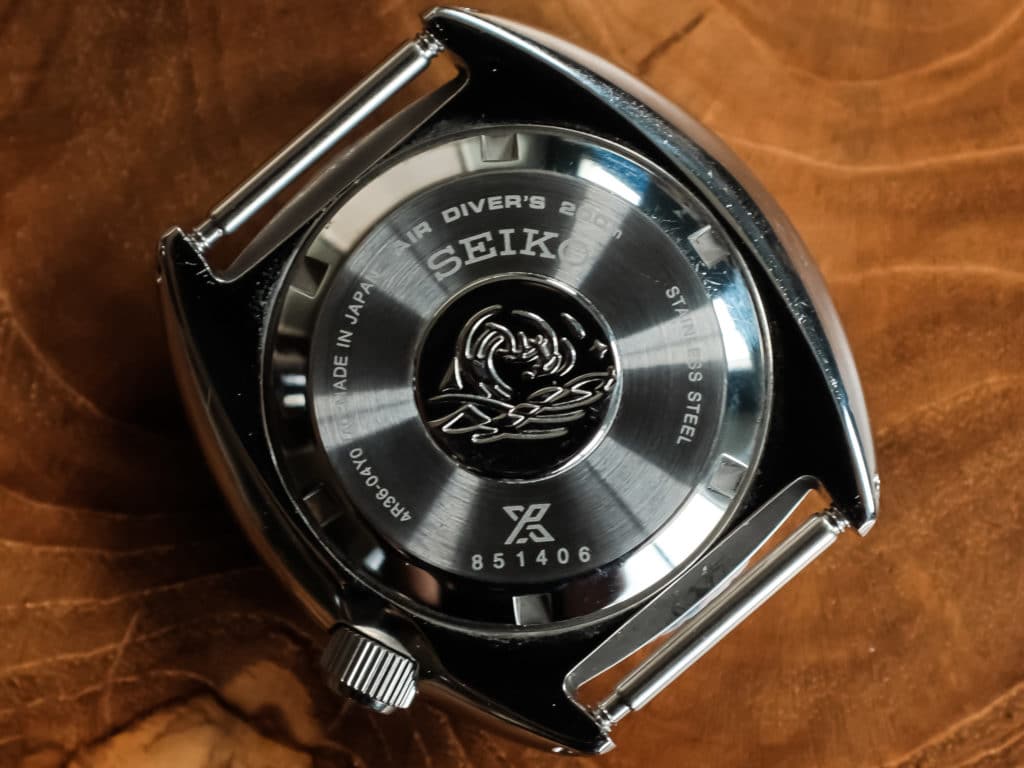
Some Accuracy Inconsistences with the 4R36
When it comes to the 4R36 automatic movement powering this Seiko Turtle, there really isn’t much to say other than it’s all luck of the draw. Tucked behind the screw-down caseback, this is essentially a 7S26 with hacking and hand-winding features. I think the power reserve is even the same as a 7S26, about 40 hours.
Thankfully mine seems to be performing well within Seiko’s parameters of -35/+45 seconds per day—in fact, much better than that. And while some have had issues with a major deviation from those numbers, I think these 4R movements will serve the wearer just fine. Maybe I’ll bring mine in for a tune-up at some point soon to see if I can land better numbers in line with the generic Swiss movement watches I own.
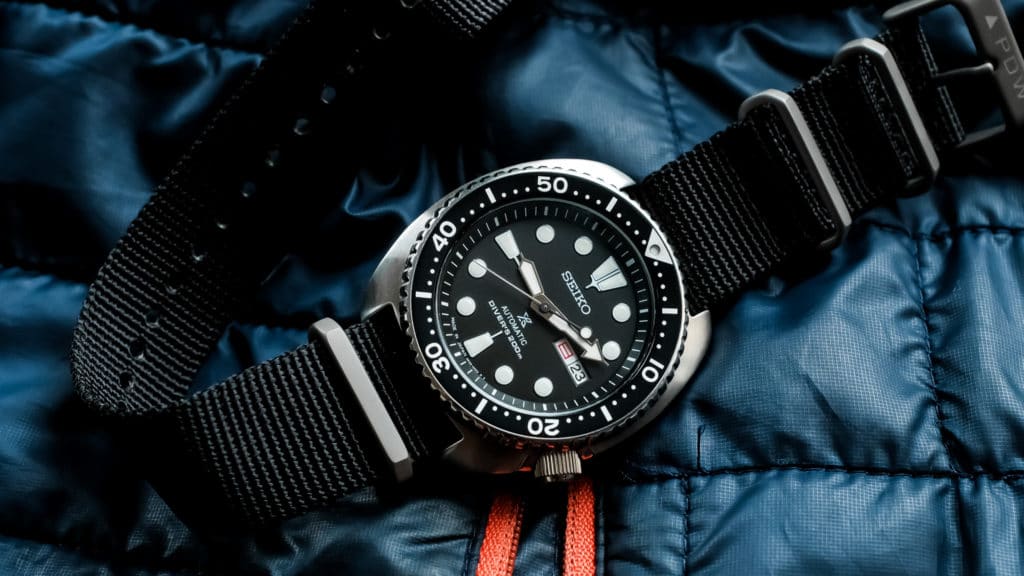
Final Verdict
It’s unfortunate but I think people have already forgotten about this brief side quest Seiko embarked on a while ago. Since then, they’ve released so many special edition variants like the King Turtle, Save the Ocean, and a bunch of PADI versions along with reissues of the 62MAS and 6105. Several were released with a price nearing or exceeding $1,000, which almost makes you wonder where things went wrong, considering the SRP777 could originally be had for $475 or less if you looked at street prices. But for whatever reason, this is the only modern Seiko diver that has remained in my collection (not counting the Sumo I was graciously gifted last year).
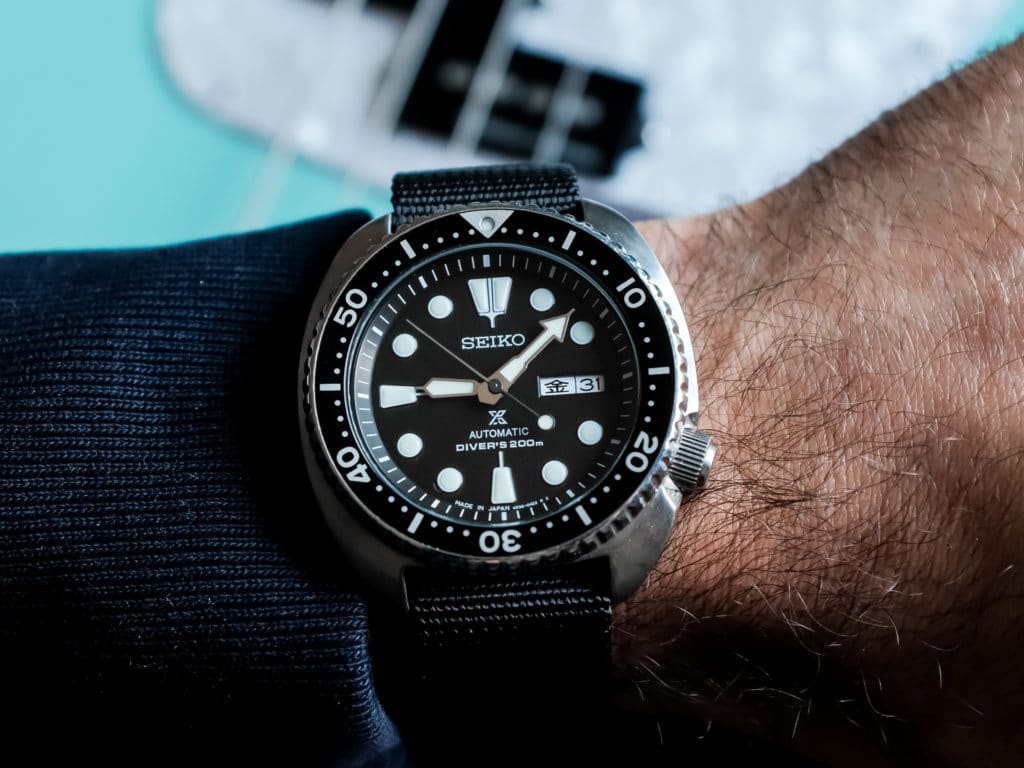
Today you can still find a Seiko Turtle SRP777 (or what may be the new SRPE93) on Amazon for around $370 and I will always recommend it. Like the version reviewed here, it’s a nearly perfect choice for an affordable Japanese timepiece that can last a lifetime, without needing to dig into the fancier $1,000+ versions around today. I’d say stick with something like this and wrap it up. You probably won’t even feel the need to own any other Seiko dive watches. I don’t even have an SKX anymore! But maybe that’ll change soon.

Co-Founder & Senior Editor
Michael Peñate is an American writer, photographer, and podcaster based in Seattle, Washington. His work typically focuses on the passage of time and the tools we use to connect with that very journey. From aviation to music and travel, his interests span a multitude of disciplines that often intersect with the world of watches – and the obsessive culture behind collecting them.
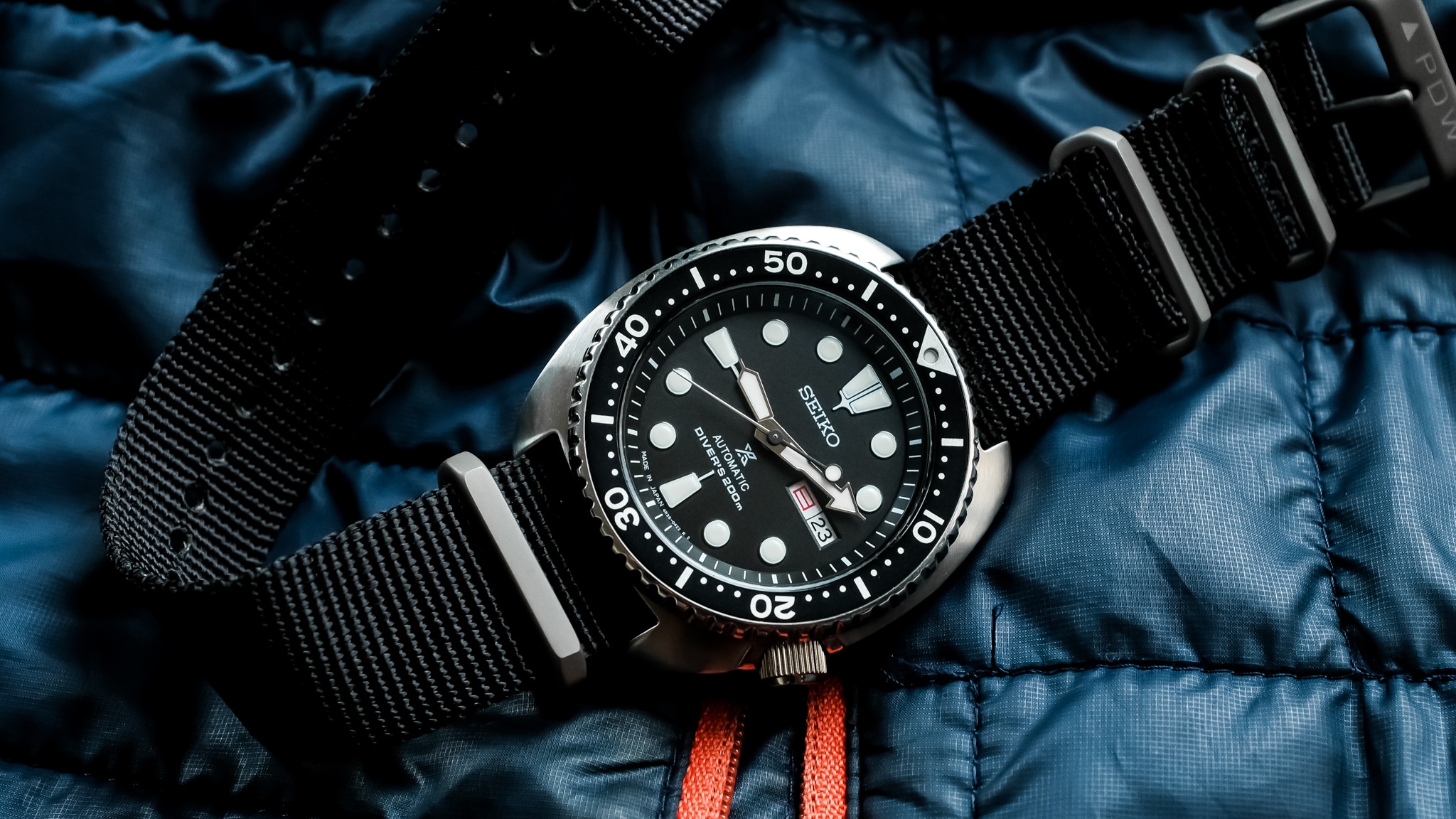
Hi Mike – Great review! The lug width should be 22mm though, right?
You’re right! Fixed.
I like my turtle. It was a gift from my son Alex one evening while we in a restaurant having dinner in Saigon. That day my Timex had gotten water in to it while swimming in the roof top pool. I had worn my Timex instead of my Steinhart Ocean One because I was afraid of getting robbed in the street. I had no idea what the conditions would be there. My son laughed at my misfortune with the Timex and said , “Well I guess you should have worn the Steinhart!” He STILL gives me shit about it. And you know how Alex it.
Here’s what the kanji mean. This isn’t the full names of the days, however.
SUN 日 nichi (sun)
MON 月 getsu (moon)
TUE 火 ka (fire)
WED 水 sui (water)
THU 木 moku (wood)
FRI 金 kin (gold)
SAT 土 do (earth/dirt)
I got my first Turtle in 2017 in Singapore. Since then there has been numerous other watches including several other Seiko and some other high end pieces however the Turtle 777 still takes more than it’s fair share of wrist time.
I recently acquired the SRPE93J, it’s a fantastic watch. Mine is running at -3 sec a day. I also wear mine on a black nato. It just feels right. I understand what you mean about not needing another Seiko diver after the turtle. It scratched the itch for me. I do look at different straps but not watches. I do have an SNK381 as well but that’s more of a field/dress watch. Thanks for the article.
is SRPE93J model made in japan? is J means japan made? whats the difference with SRPE93?
Having started with a SKX007J in 2000, then moved up to Omega Seamaster 2531.80, CWC SBS issue diver, Sinn. EZM3, Bulova Oceanographer reissue, Precista PRS18Q, Citizen BN0000-04H, Citizen Ecozilla, Citizen NY0040. I’ve got bored with them all and flipped all except for the SKX. It was the first, and it’s staying. I’ve added to it with a King Turtle and a King Samurai Shu Iro and that’s where it’s going to stop. There’s just something about it with its rattly bracelet, and the bezel actually lines up, which is something the King’s can’t manage……….might get a sumo…..🫣